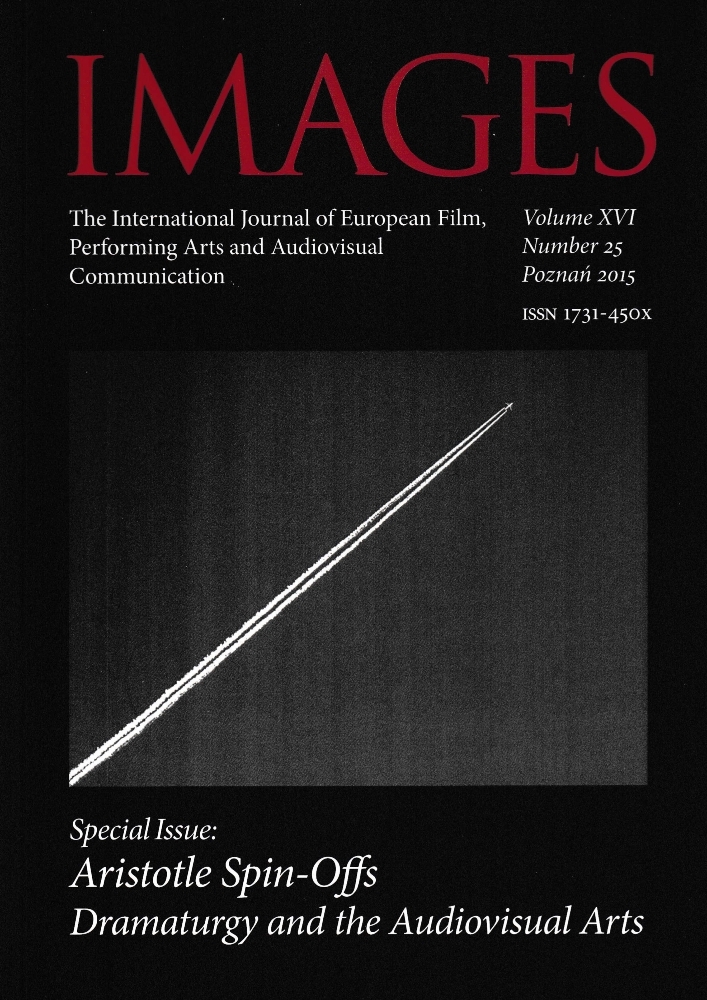Abstrakt
The Narrative Complexity of Contemporary TV Series Based on Vince Gilligan’s Breaking Bad
The formula of the contemporary TV series, as a product of quality television, diff ers signifi cantly from the traditional series in terms of its narrative structure and ways of building a plotline. Th is article presents an analysis of the Breaking Bad series’ “narrative complexity”, which is the most distinguishing feature of the modern TV series. “Narrative complexity” can be understood not only as a series of innovative narrative devices, such as cold opens, fl ashbacks and fl ashforwards, but is also based on the multiplicity of plotlines present in each episode, constituting a whole story over the course of the seasons. Looking at the ways used to construct a plot and the narrative techniques adopted in Vince Gilligan’s Breaking Bad, that is, his use of parallels and symmetries, and the plot’s focus on the development of the series’ (anti)hero, the show can be interpreted as a “result drama"and “mirroring drama”. Th rough its use of the above-listed features of “narrative complexity”, the show meets the standards for a contemporary, quality television series.
Bibliografia
R.J. Thompson, Television’s Second Golden Age: From „Hill Street Blues” to „ER”, New York 1996.
M. Filiciak, TV czy nie-TV? Telewizja doby post-soap i sieci peer-to-peer, w: Post-soap. Nowa generacja seriali telewizyjnych a polska widownia, red. M. Filiciak i B. Giza, Warszawa 2011, s. 240.
A. Lotz, Zrozumieć telewizję u progu postsieci [post-network era], przeł. M. Poks, w: Zmierzch telewizji? Przemiany medium. Antologia, wyb. i red. T. Bielak, M. Filiciak, G. Ptaszek, Warszawa 2011, s. 96–103.
S. Cardwell, Czy telewizja jakościowa jest dobra? Różnice gatunkowe, oceny oraz kłopotliwa kwestia krytycznego osądu, przeł. D. Kuźma, w: Zmierzch telewizji? Przemiany medium. Antologia, wyb. i red. T. Bielak, M. Filiciak, G. Ptaszek, Warszawa 2011, s. 137.
J. Feuer, HBO i pojęcie telewizji jakościowej, przeł. M. Filiciak i inni, w: Zmierzch telewizji? Przemiany medium. Antologia, wyb. i red. T. Bielak, M. Filiciak, G. Ptaszek, Warszawa 2011, s. 119.
A. Lewicki, Kino i telewizyjne seriale w epoce konwergencji mediów, w: idem, Od House’a do Shreka. Seryjność w kulturze popularnej, Wrocław 2011, s. 34.
J. Mittell, Złożoność narracyjna we współczesnej telewizji amerykańskiej, przeł. D. Kuźma, w: Zmierzch telewizji? Przemiany medium. Antologia, wyb. i red. T. Bielak, M. Filiciak, G. Ptaszek, Warszawa 2011, s. 176.
Jake Jawesome, Break Bad, http://www.urbandictionary.com/define.php?term=Break20Bad [dostęp: 05.11.2014].
J. Trinks, Seryjność jako podstawowy problem estetyki telewizji, przeł. F. Chmielowski, w: Piękno w sieci. Estetyka a nowe media, red. K. Wilkoszewska, Kraków 1999, s. 166.
Licencja
Copyright
© 2015 Uniwersytet im. Adama Mickiewicza w Poznaniu
OPEN ACCESS
